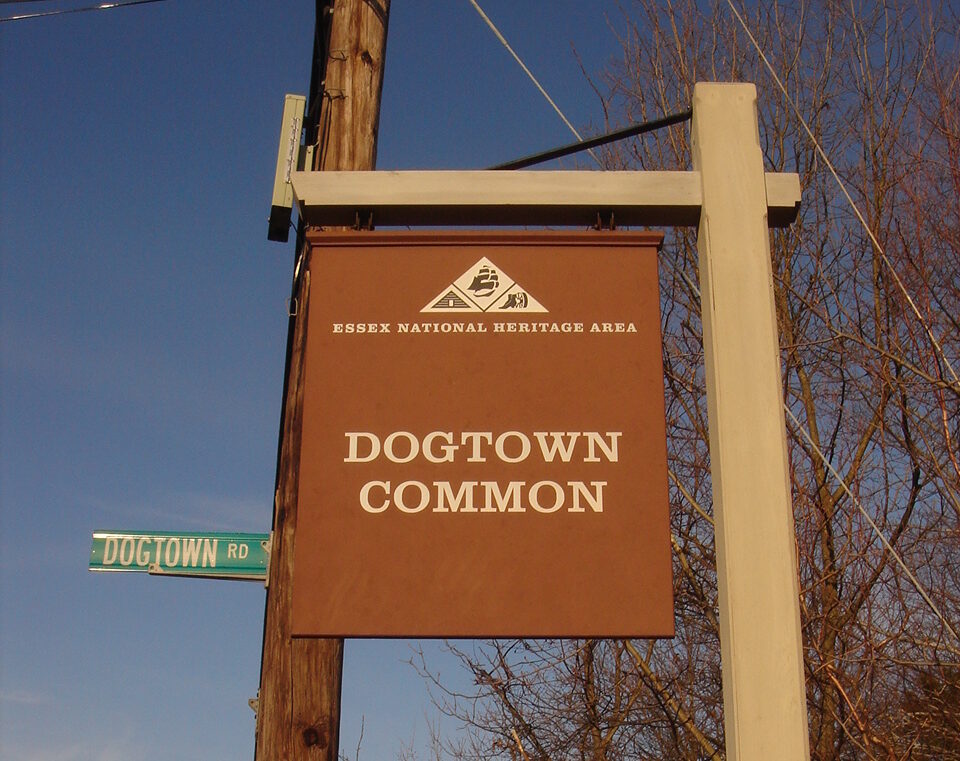With the American Northeast settled so many centuries ago, it only makes sense that a vast number of towns and settlements formed in the early days of our nation’s history would be abandoned by 2024. In the state of Massachusetts alone, there are more than a dozen abandoned towns. Many were lost to time due to a lack of access to basic necessities like fresh water and trading posts.
There are many interesting locations dotting the modern map of Massachusetts. However, one of the single most fascinating abandoned spaces is just a few miles inland from the beaches of Cape Ann. The abandoned settlement, known today as Dogtown, was originally founded in 1693, and has been uninhabited since 1830. So, let’s take a moment to look into the fascinating history behind Dogtown, and see what we can learn about the historic ghost community today.
Discovery And Settlement
Long before Dogtown became the abandoned town that we know and love today, settlers and pilgrims from overseas arrived at the North Shore area. As mentioned, the site was first settled in 1693. This was nearly a full century before the United States would officially earn its status as a sovereign nation. The land which later comprised Dogtown was a common space, where settlers harvested wood and other wild supplies. As well, the space serves as grazing land for farm animals in this time. In the early 1700s, settlers begin building structures in the region. They cite the locale’s safe location away from the coast as reasoning for this placement. This distance shielded women and children from attacking pirates or invading ships, as well.
At the height of Dogtown’s population, the now-abandoned town contained roughly 100 families, and was particularly popular for women whose husbands set out to fight in the Revolutionary War. The site was originally titled the Common Settlement, but eventually earned the name Dogtown as women would often keep pets as company in the absence of their war-bound partners. At its height, the town had spread to a radius of over 5 square miles.
Post-Revolution Years And Decline
Dogtown started to lose steam once the Revolutionary War concluded. In this time, soldiers returned to their homes and resumed their standard agricultural duties. Since settlers cleared most of the land’s natural resources for the settlement, Dogtown offered very little in the way of farming. Plus, its proximity to the coastal city of Gloucester meant that new roads ran right past the minor settlement to reach the newly-booming fishing industry in the region. The lack of encroaching enemy ships essentially nullified the need for vulnerable women and children to remain in Dogtown. Eventually the town became abandoned by nearly every family who lived there.
The final remaining citizens of the abandoned town were those with nowhere else to go. This included a few black Americans who had earned their freedom or escaped from slavery during the late 1700s. It also housed a smattering of single women who would later come to be accused of practicing witchcraft. One woman named Tammy Younger even became the subject of area-wide folklore. Some referred to her as “Queen of the Witches” at the time. Kids passing through Dogtown on their way to Gloucester delivered gifts of corn, fish, and other goods to Younger in exchange for their safe passage.
The Dog Days Of Dogtown
As residents died off or departed in droves, wild dogs began heavily populating the region, resulting in many locals co-opting the once endearing city moniker as a term of derision. The previously thriving town once associated with man’s best friend quickly fell to ruins, as Essex County locals espoused the irreparable status of Dogtown to visitors and local traders. The mid 1800s saw the town completely abandoned. That was, of course, save for a single resident known as Black Neil to the locals.
Neil, whose real name was Cornelius Finson, was a free black man who had taken to living off the land in solitude. Unfortunately, Finson was found with his feet frozen solid one day, unable to walk. This prompted locals to remove him from the abandoned town, bringing him to a poor house in Gloucester. There, he was monitored and looked after. Even under the care of professionals, Finson died shortly after moving to the new locale, and nobody has ever inhabited Dogtown since.
Can You Explore This Abandoned Town Today?
Unlike most abandoned towns across the country, which have been boarded up and condemned by their respective counties, Dogtown currently maintains a thriving series of woods and trails for public exploration. Most of the area which once served as a home to North Shore residents has now been fully reclaimed by the environment, especially within the Northwest area of the abandoned town, which is known as the Norton Memorial forest. The forest is named for a former NASA physicist and MIT professor who made it his mission to plant thousands of trees and fern species throughout the region, lending a major helping hand to the area’s biodiversity.
Today, the only remnants of the man-made structures which once dotted the land are a series of cellar holes, which are numbered and marked by boulders. The former Dogtown is also the site of the so-called Babson Boulders, which were commissioned by late American entrepreneur and economist Roger Babson during the Great Depression. As the financial downturn impacted families across the country, Babson reached out to a number of unemployed stonecutters. They carved inspirational messages and words of wisdom on dozens of large rocks across the abandoned town. Many of these are still present and legible today.
The Babson Boulders include phrases like “Never try, never win,” “Keep out of debt,” and “If work stops, values decay”. They’ve become something of a tourist attraction in recent years. Hikers and outdoorsmen make it their mission to locate and photograph them.





